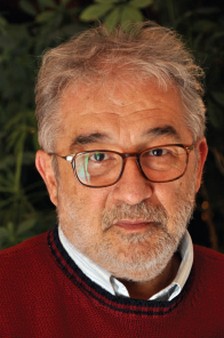
Zoran Erić (1952, Serbia) acquired his BA and MA degrees in composition at the Faculty of Music in Belgrade. For a short time, he also studied at the Orff Institute in Salzburg and in Witold Lutosławski’s master-class in Grožnjan, Croatia. His works have been performed in almost every country in Europe, in the US, China, and Australia, by renowned Serbian and foreign ensembles. He is a full professor at the Department of Composition at the Faculty of Music in Belgrade; in addition, he has taught master-classes and seminars at the Guildhall School of Music and Drama in London and at Iressia in Athens. Between 1992 and 1998, he was a vice-dean of the Faculty of Music in Belgrade, and between 2000 and 2004 a vice-rector of the University of Arts in Belgrade and chairman of the Board of SOKOJ, the Serbian organisation for protecting intellectual rights in music. Between 2007 and 2015, he was head of the Department of Composition at the Faculty of Music and became, in 2015, rector of the University of Arts in Belgrade.
In Erić’s oeuvre, a special place is occupied by incidental and film music. He has collaborated with some of Serbia’s most prominent theatre makers, such as Sonja Vukićević, Gorčin Stojanović, Nikita Milivojević, Vida Ognjenović, Nebojša Bradić, Ivana Vujić, Milan Karadžić, Haris Pašović, Dejan Mijač, Boro Drašković, Egon Savin, and others.
Erić has won a number of prizes and awards, most notably the October Award of the City of Belgrade, YUSTAT Grand Prix for incidental music, two Golden Mimosas for film music, two Sterija Awards for incidental music, and the Great Gold Medal of the University of Arts in Belgrade. He is a triple laureate of Serbia’s most prestigious award in the domain of music – the Mokranjac Award.
Images of Chaos VII – List No. 3 from Images of Chaos for trumpet and electronics comprises the opening images of chaos from Erić’s piece Velika crvena mrlja Jupitera (The Great Red Spot of Jupiter, 1990) for amplified harpsichord, percussion, and live electronics. This list is complemented with new scenes from Hieronymus Bosch’s famous rendering of Hell in his Garden of Earthly Delights, which is (extra)ordinary and (un)explainable, but organised well and altered and complemented every day. Also, it belongs to one of the lists cited by Umberto Eco in his book The Infinity of Lists (La vertigine della lista, 2009).
At the première (and in all subsequent performances), I always performed The Great Red Spot of Jupiter with Miloš Petrović. His improvisation survives on the only recording of the piece ever made (Đ. Petrović), at the Sound Studio of the Faculty of Music in Belgrade. That recording of Petrović’s authentic improvisation forms the basis of the electronic layer of Spisak br. 3 (List No. 3).
In this piece, by way of clean rhythmic-melodic patterns, the trumpet establishes a close connection with Petrović’s improvisation. In a special way, that connection should also be facilitated by the electronic layer, which ‘comprises’ the musical essence of Petrović’s improvisation in The Great Red Spot of Jupiter.


